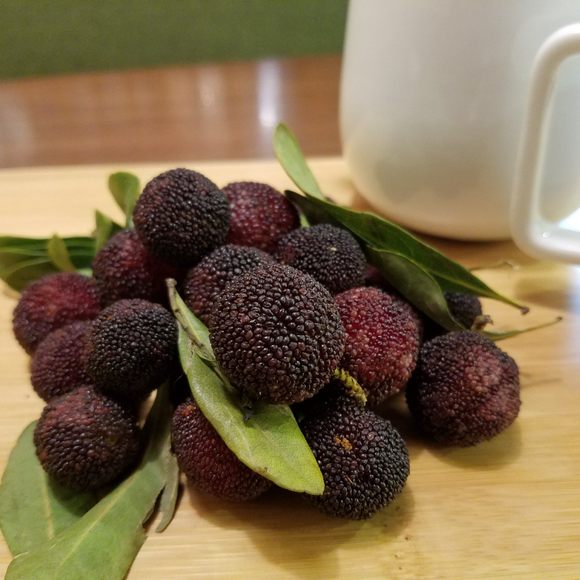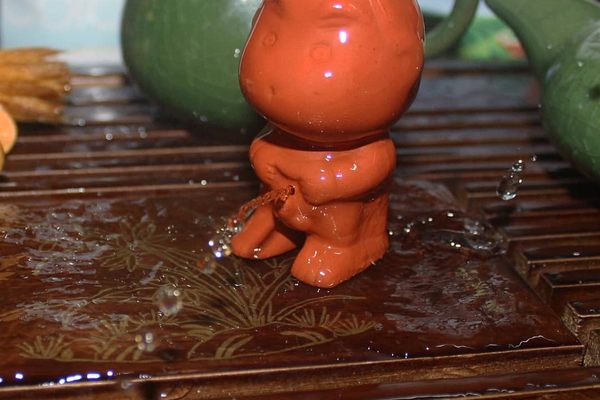For more than 2,000 years yangmei (Myrica rubra) has been cultivated and much loved throughout China. This fruit goes by many names, including bayberry, waxberry, yamamomo, Chinese strawberry, arbutus, strawberry tree fruit, and, more recently, yumberry.
Each fruit is the size of a large cherry and has a bumpy exterior composed of many tiny stalks of flesh that attach to a single fuzzy seed that lies at its center. These tiny stalks impart a unique texture that is firm and chewy, but they also provide hiding places for small pests and trapped dirt. In China, people typically soak the fruit in salt water before eating in order to draw out anything objectionable.
The flavor of yangmei is similar to strawberry and raspberry, but slightly more tart and with an herbal taste to it. Vendors often sell them in different stages of ripeness depending on what the buyer wants. Fruits with a deep, dark red color are sweeter and best eaten fresh. Bright red fruits tend to be sour and are more commonly used in cooking. Yangmei can be dried, candied, baked with, or used to flavor teas. Bright red yangmei are often infused in baijiu (a clear liquor) to make a fruit-flavored alcohol that can be sipped or cooked with other foods such as shrimp.
Due to the fruit’s unfortunate ability to harbor pests, it is almost impossible to find fresh yangmei outside Asia, but packaged products containing the fruit can be found in the United States and Europe. In the early 2000s, juices and powders made from the fruit were marketed under the name “yumberry” as another contender in the superfruit craze. However, it seems that yumberry lost the fight against other antioxidant-rich fruits such as pomegranate and açaí. Many websites of several major companies that once marketed yumberry juice are either down or no longer have items for sale. Yumberry does still show up in some Western products, such as Sobe Lifewater, but it is still unknown to many outside of its home.
Written By
 Jared Rydelek
Jared Rydelek













